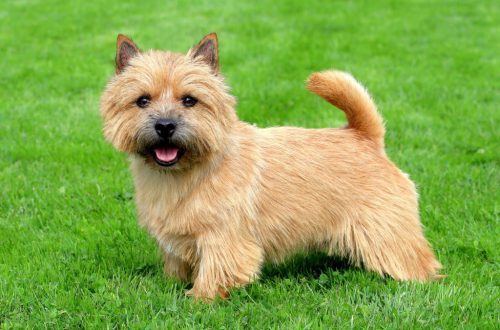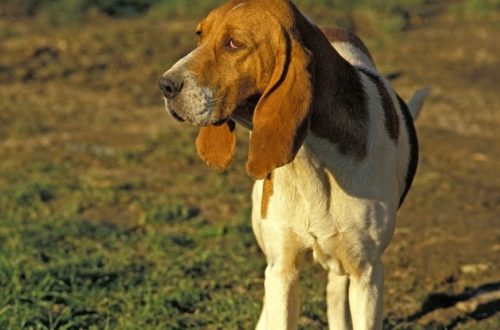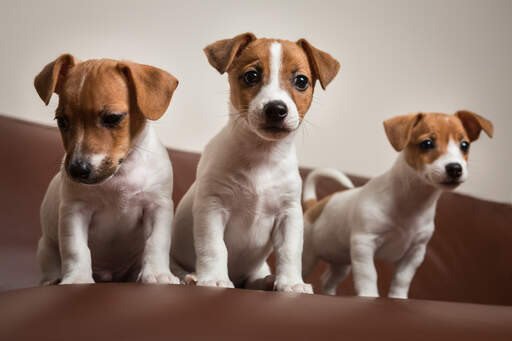
Jack Russell Terrier
Contents
- Characteristics of Jack Russell Terrier
- Basic moments
- History of the Jack Russell Terrier
- Video: Jack Russell Terrier
- Hunting qualities
- Appearance of Jack Russell Terriers
- Photo of an adult Jack Russell Terrier
- Jack Russell Terrier personality
- Education and training
- Care and maintenance
- Health and disease of the Jack Russell Terrier
- How to choose a puppy
- Photos of Jack Russell Terrier puppies
- Jack Russell Terrier price
Characteristics of Jack Russell Terrier
| Country of origin | England |
| The size | small |
| Growth | from 25 to 30 cm at the withers |
| Weight | 5–8 kg |
| Age | up to 14 years old |
| FCI breed group | terriers |
Basic moments
- The Jack Russell Terrier is only suitable for people who lead an active lifestyle and can provide their pet with regular exercise.
- Dogs are firmly attached to the owner and other family members, they yearn alone.
- Contrary to the image replicated in the movies, the Jack Russell Terrier is not always sweet and accommodating, he needs an experienced owner who is ready to devote a lot of time to education.
- The sonorous and loud barking, which was necessary for hunting, can lead to conflicts with neighbors in a city apartment.
- Representatives of this breed do not require complex care, standard hygiene procedures and regular visits to the veterinarian are enough.
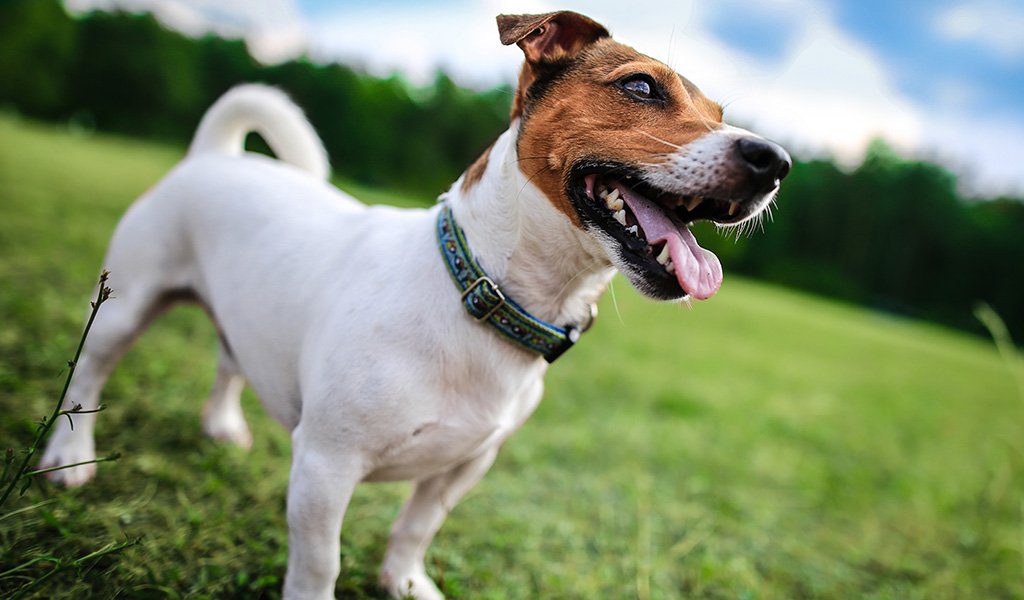
The Jack Russell Terrier was previously famous for its working qualities as a burrowing dog, but few modern breeders systematically develop the hunting instincts inherent in the genes of these frisky kids. In the 20th century, they turned into loyal and funny companions, real favorites of families who are used to spending their leisure time actively.
History of the Jack Russell Terrier
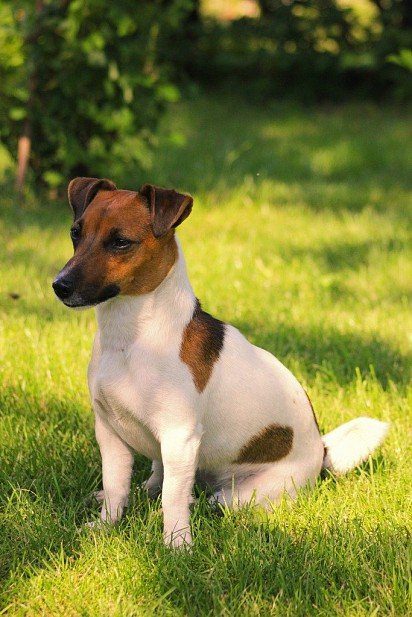
There are breeds that have lived side by side with humans for so long that it is possible to reliably find out about their roots only with the help of genetics. Such, for example, is the situation with the ancestors of Jack Russells – Fox Terriers . Their first descriptions are found in the Roman chronicles of the times of Caesar’s campaigns against Albion.
But the closer to the present, the more documentary evidence, so today no one doubts that the Jack Russell Terrier owes its appearance to a very specific enthusiast – John “Jack” Russell. Following family tradition, he became a priest and headed a small parish in the south of Britain, but the true passion of this man was not serving the church, but parfor hunting and breeding dogs for her.
Back in John’s last year at Exeter College, Oxford University, a landmark meeting took place. During one of his walks, he saw a dog that embodied the ideal qualities of a real fox hunter: compact size, excitement, vigilance and fearlessness. The treasure belonged to a local milkman, who was hardly capable of fully appreciating the above-mentioned advantages, so the first owner immediately gave Trump to the persistent student. With this Trump – this is how the English word Trump is translated – many years of selection work began.
Of course, outwardly, the progenitor of the breed does not look so much like the current “Jacks”. The similarity is noticeable only in color: on the dominant white background, darker spots stood out in the area of the eyes, ears and at the base of the hook-shaped tail. Judging by the surviving drawings, Trump was a poor-boned dog with a small skull. Most likely, in her family were now extinct English white terriers.
Breeding
I must say that in the process of breeding a new breed, the pastor used representatives of various burrowing dogs. There is no exact data on experiments with the gene pool, since the breeder did not keep any journals with records, or they simply did not survive. Researchers believe that the fox terriers of the old format, borders, lakelands, Irish terriers, and Scottish cores left their mark on the formation of the breed. Russell set himself the task of improving the working qualities of the offspring, and he did not consider it necessary to cull puppies because of the shape of the skull or the setting of the tail. As a result, the clumsy and rough cut, short-legged pets of the Devonshire priest won the ardent love of all the surrounding hunters.
Although the vicar himself was involved in boxing (which in the 19th century was a very tough sport, because protective gloves were not used), he was not inclined to cruelty and publicly condemned those fellow breeders who mixed the blood of fighting dogs into terriers. For John, parforous hunting was incompatible with killing or inflicting severe injuries on prey; he considered the main goal to be a competition between foxes and his animals in speed and endurance. Russell’s terriers didn’t need the ferocity and powerful bulldog jaws.

The achievements of the pastor in breeding and popularizing terriers did not go unnoticed. In 1873, he, along with Sewallis Shirley and a dozen like-minded people, took part in the creation of an organization today known as the oldest kennel club – the English Kennel Club. In subsequent years, John Russell was invited as a judge at exhibitions, but he did not exhibit his own pets, calling them wild rose hips against the background of greenhouse roses. And this comparison was not in favor of the latter.
John Russell, who devoted a significant part of his life to dog breeding, died at the age of 87 and was buried in the village of Swambridge – in the cemetery next to the medieval church of St. James, where he served. Since he actively sold puppies and adult dogs, at the time of his death, the breeder had only 4 dogs.
The development of the breed was continued by a young colleague, Arthur Heinemann. It was he who was the author of the first draft of the breed standard. In 1914, the Parson Jack Russell Terrier Club was founded (parson means “priest”), which lasted until the 40s. In the middle of the century, Russell Terriers, to improve their character and working qualities, began to cross with dachshunds and Welsh Corgis . As a result, not only “classic”, but also short-legged animals began to appear. The latter were considered undesirable for a long time and in the eyes of the jury invariably lost to their tall brothers.
It is not known how the fate of the “side branch” would have developed if in the 1960s several short-legged dogs had not ended up on the Green Continent. The Australians, of course, were not going to hunt with them, but they appreciated the energy and quick wit of their new pets, so they took up the development of the breed with great enthusiasm.
Official recognition of the Kennel Club and the FCI came only in 1990. Then both types of dogs were introduced into the standard of the International Canine Organization under the general name of the Parson Jack Russell Terrier. However, activists from the UK and Australia did not stop trying to achieve a distinction, and in 2001 two standards were adopted: for the Parson Russell Terrier (animals on long legs with a square body) and the Jack Russell Terrier (short-legged with an elongated body).
Video: Jack Russell Terrier
Hunting qualities
Like many other representatives of the terrier group, Jack Russell Terriers were bred to participate in hunting small game that lives in holes. Of course, terriers do not have enough speed and power to track and pursue, but English foxhounds or other hounds did an excellent job of this task, but in order to penetrate into an underground shelter and force the “fugitive” to leave it in a fight, there is no equal to persistent and compact strong men.
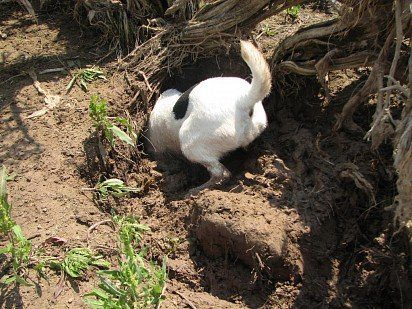
It has already been mentioned above that Jack Russell Terriers earned their fame as excellent burrowing dogs not for ferocity, but for their sonorous voice and high intelligence. They not only understood the strategy of hunters in a given situation, focusing on various horn signals, but also made their own decisions that helped save energy without sacrificing efficiency.
Since their inception, “jacks” have been an integral part of rural life in the UK. However, since 2002 in Scotland, and since 2005 in England and Wales, fox hunting has been officially banned, although for many it was part of the country’s cultural heritage. Badgers are also protected today by conservation organizations. In the south of Spain there is still a hunting area where it is possible to pursue game on horseback, but in most European countries the tradition is becoming history due to the lack of uninhabited areas with suitable landscape.
But innate instincts cannot be canceled as easily as centuries-old rituals, so the four-legged “townspeople” do not miss the opportunity to chase a cat that has turned up or dig an impressive hole in the roots of trees from the nearest park during a walk.
Appearance of Jack Russell Terriers
The Jack Russell Terrier is a small but strongly built dog. Height at the withers is 25-30 cm. There are no strict weight standards, however, experts note that the Jack Russell Terrier looks harmonious, which has 1 kg of weight for every 5 cm of growth, that is, the desired mass of an adult representative of this breed is 5-6 kg.
Body
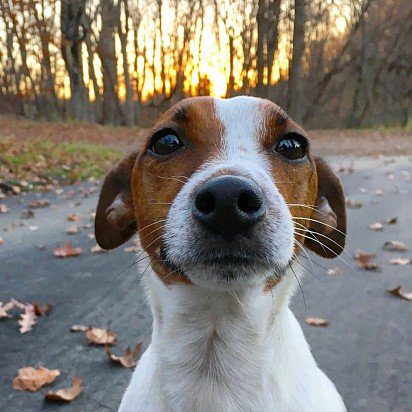
The silhouette of the Jack Russell Terrier is strictly rectangular, elongated (the length from the withers to the base of the tail is greater than the height at the withers).
Head
The skull is flat and moderately wide. The muzzle is somewhat shorter than the skull. The transition from forehead to muzzle is well defined, but not too pronounced.
Nose
Careful. Black lobe. Nostrils developed and well open.
Eyes
Almond shaped, dark. Not bulging, the eyelids are adjacent to the eyeball and darkened along the edge.

Teeth and jaws
The jaws of the Jack Russell Terrier should be strong, powerful, strong teeth. Scissor bite. Lips black, tightly closed.
Ears
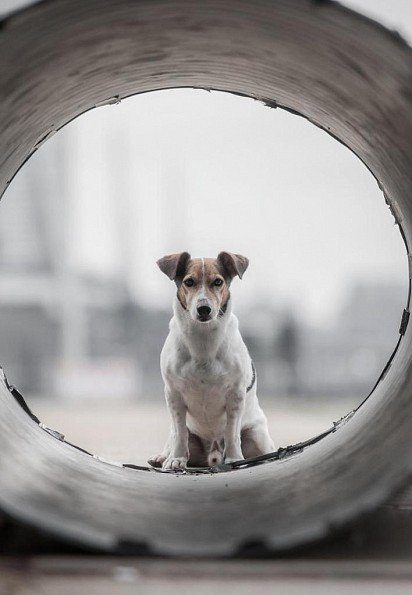
“Buttons” or hanging. Small, broken in front. Extremely movable, can be rotated 180°. The ends are V-shaped.
Neck
Strong, with a clean, crisp line.
Frame
The croup is even. The loin is short, strong and muscular. The back is strong and rather narrow.
Breast
Deep, not wide. The ribs stand out strongly at the base and are noticeably flattened laterally. The circumference of the ribs behind the elbows is 40-43 cm.
Tail
The Jack Russell Terrier’s tail may be lowered when at rest, but is sure to rise when moving.
Forelimbs
They look the same from the front as well as from the side. Straight, well placed under the body. The shoulder blades have a good slope back, the muscles are not overloaded.
Hind limbs
Strong and muscular. The knee joints are strongly bent, the hocks are low. Metatarsus when viewed from behind are parallel.
Paws
Small, round, with firm pads. Set straight. The fingers are moderately rounded.
Wool
Jack Russell Terriers can have three types of coat: harsh, smooth, or kinked. Should be well protected from bad weather.
Color
Predominant white background with dark spots. The color of the spots can vary from black and dark chestnut to red.
Photo of an adult Jack Russell Terrier
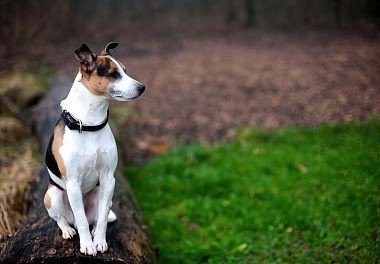
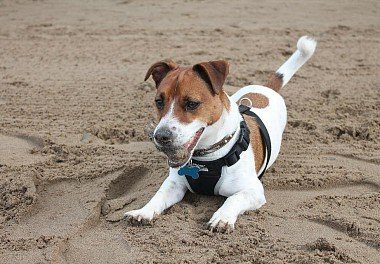
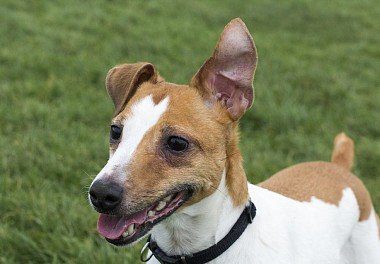
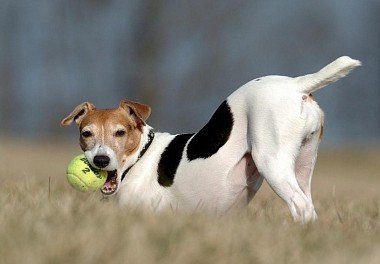

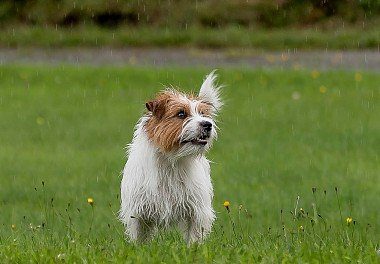
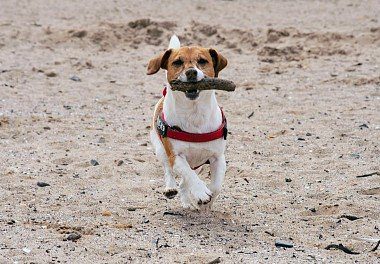
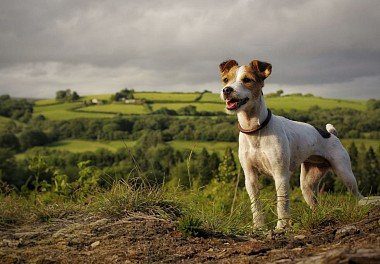
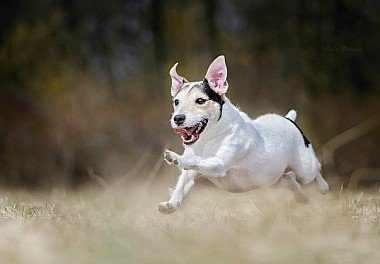
Jack Russell Terrier personality
Jack Russell Terrier is a real perpetual motion machine. He is simply physically unable to sit in one place for a long time and get bored while waiting for the game. This dog will attract the attention of the owner by all available means. She knows the rules of behavior in the house very well and can deliberately violate them in order to cause at least some reaction from the owner, who is too carried away by her favorite series or a new book.
It is important to remember the high intelligence of the pet. Physical activity must be accompanied by mental activity, otherwise any activity will quickly get bored. Alternate teams and toys, come up with new activities.
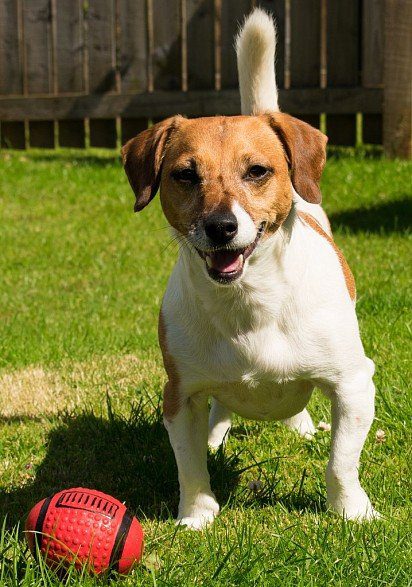
In general, representatives of the breed are distinguished by a cheerful and friendly disposition. Jack Russell Terriers are great for families where the kids are old enough not to treat the pet like a teddy bear. Aggression for no reason can be shown only by dogs in whose upbringing from early childhood serious mistakes were made.
Representatives of this breed do not get along well with other animals in the house because of the hunter genes. Neighborhood with rodents is especially undesirable, because Jack Russells are famous rat catchers, but they can also cause trouble for cats. In relations with dogs of their own or another breed (regardless of the size of the enemy), due to their courageous and wayward nature, they will always try to dominate, constantly engaging in skirmishes.
Education and training
Jack Russell Terriers are best suited to experienced owners as they are naturally cunning, independent and eager for leadership. If you feel that you are not fully coping with the character of a new family member, seek advice and help from a specialist dog handler as soon as possible.
Early socialization of a puppy is important so that in the future he can coexist peacefully with household members (including children and the elderly), other pets, and does not show aggression towards guests and random passers-by during walks.
Stubbornness, loud barking, damage to household property, anxiety from being alone, digging and chasing small animals are considered to be the main behavioral problems of the Jack Russell Terrier. All of them can be corrected with due attention from the owner. The dog shows the worst sides of his character only if he does not meet opposition or sees this as the only way to attract the attention of the owner.
The breed lends itself perfectly to training, the main thing in the process is to be patient, do not forget about rewards and do not raise your voice. Establishing the authority of the owner is extremely important, but it can and should be achieved with calm firmness. The pet should respect and listen to you, and not be afraid.
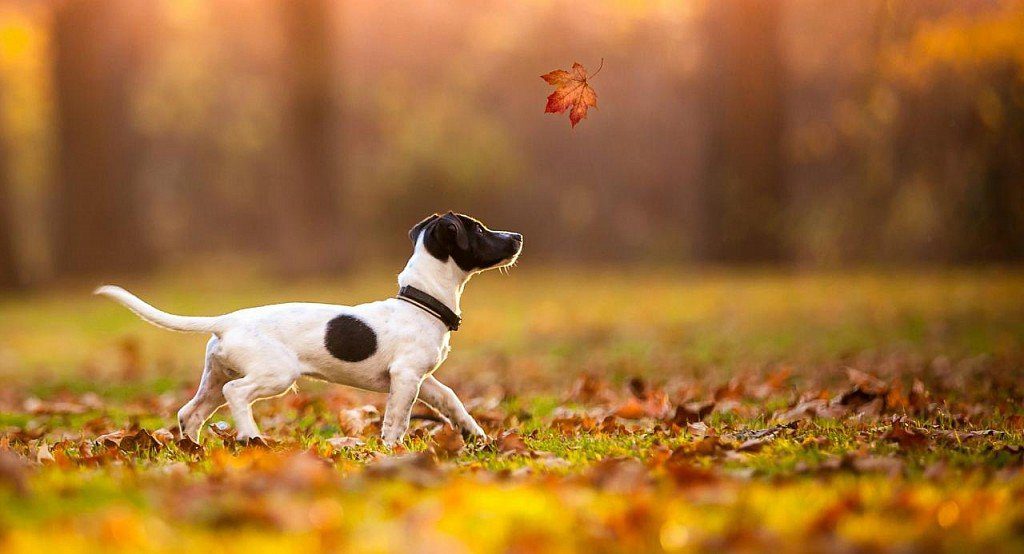
Care and maintenance
Despite the compact size of Jack Russells, keeping them in a city apartment is fraught with certain difficulties. Dogs are too active for a quarter of an hour walk in the morning and evening to satisfy their need for exercise. With a lack of training, they will spend excess energy on destructive pranks. As a result, furniture, appliances, floors, shoes and clothes of the owners may suffer. It should be understood that for the Jack Russell Terrier this is not an act of revenge or a conscious sabotage, but simply an attempt to occupy oneself with something in the absence of the owner, therefore, before leaving for a few hours, you need to find time for a long and meaningful walk.
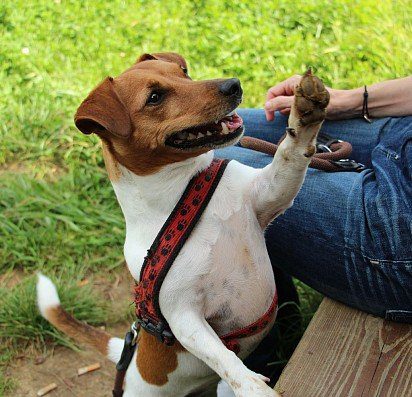
From a young age, your pet should know that he has his own territory in the house. Choose a place protected from drafts and not too close to heat sources. It is necessary to purchase a natural mattress that is strong enough to withstand the attacks of powerful teeth. Nearby should be stored toys that the Jack Russell Terrier can chew with impunity after waking up.
Grooming is not too much of a hassle, although this breed sheds throughout the year when kept at home. Only wire-haired terriers need trimming with special tools, the rest need regular brushing. Frequent bathing is contraindicated because it damages the natural protective layer on the pet’s coat and skin. After walking, it is enough to wipe the paws with a damp towel or napkins for animals.
Teeth should be brushed once or twice a week with a specialized toothpaste. Check and clean your ears twice a month.
The nutrition requirements for the Jack Russell Terrier are standard. Either premium and super premium food, or balanced natural food. In the latter case, the ratio of meat (beef, veal, boiled poultry and offal) and vegetable components should be 2:1.
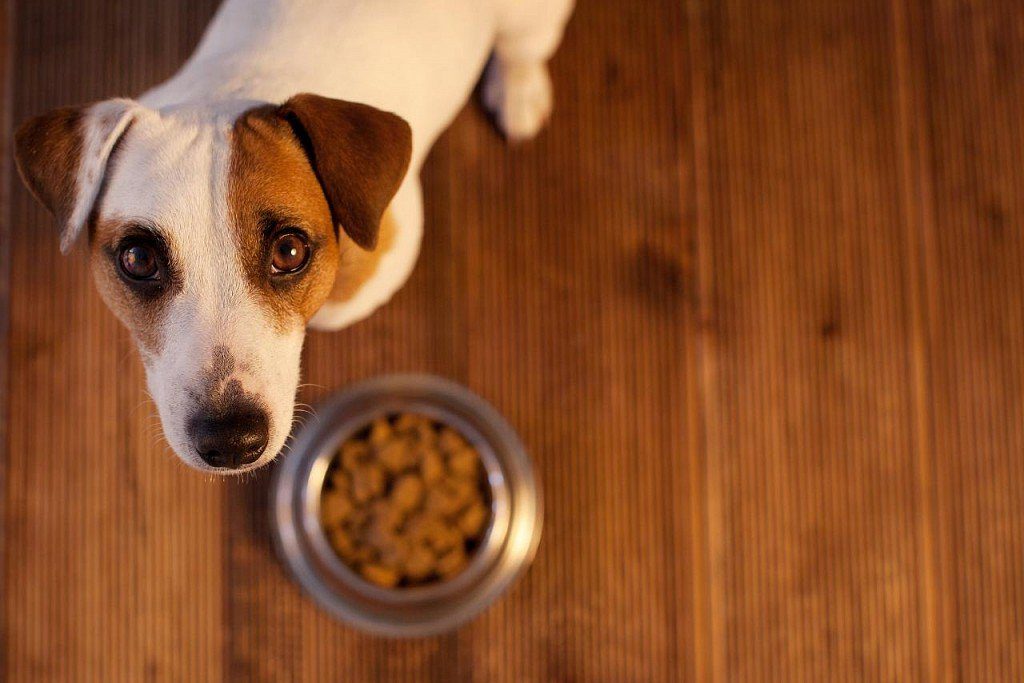
Health and disease of the Jack Russell Terrier
In general, Jack Russell Terriers can be called hardy dogs with good health. But they are not immune from a number of congenital and acquired diseases:
- osteochondropathy of the femoral head (Perthes disease) manifests itself in puppies 4-10 months old in the form of constant or periodic lameness;
- dislocation of the kneecap;
- hip dysplasia, although large breeds are more often considered a risk group, does not bypass terriers;
- deafness;
- heart diseases;
- epilepsy;
- hereditary defects in the development of the sclera, choroid, retina, optic nerve and retinal vessels – the so-called collie eye anomaly.
To keep your pet healthy and improve their quality of life well into their advanced years, visit your veterinarian regularly for preventive checkups and follow their recommendations. Do not self-medicate in case of symptoms of various diseases.
How to choose a puppy
The appearance of Jack Russell Terriers on the movie screen and in photo reports of glossy magazines from the life of celebrities did not affect the breed in the best way. Many unscrupulous breeders have appeared who seek to make a profit by selling popular animals and do not care at all about the gene pool and raising babies.
It is very important to buy puppies only from breeders with an impeccable reputation and in the best kennels. Of course, such Jack Russells will cost more, but in the future you will not have to deal with uncontrollable dog behavior or spend all your free time in clinics due to hereditary health problems.
When meeting a Jack Russell Terrier for the first time, it is important to pay attention to the behavior of the selected puppy. He should be playful, energetic and sociable. Lethargy, apathy and lack of appetite indicate poor health, and aggression or fear of the outside world indicates mental instability. Do not disregard the conditions of the mother and babies. Cleanliness, sufficient space and the presence of toys indicate the responsible attitude of the breeder no less than the presence of official documents and routine vaccinations.
Photos of Jack Russell Terrier puppies
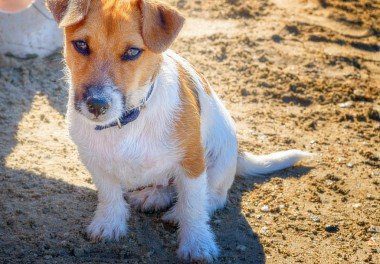
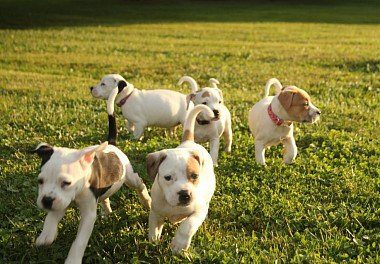
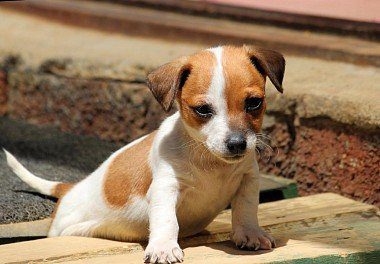
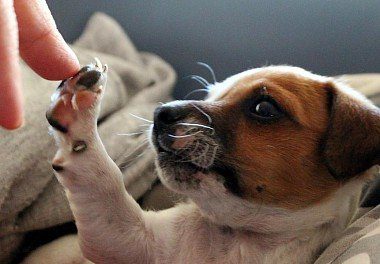
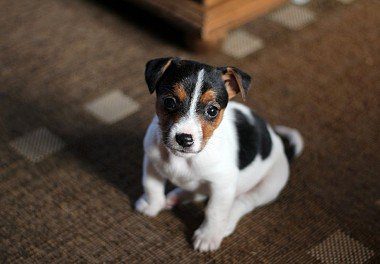
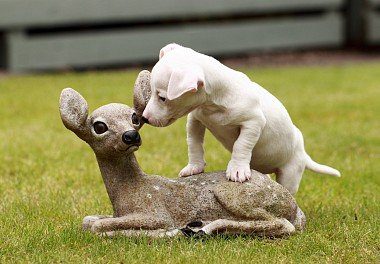
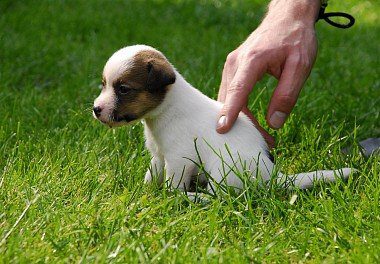
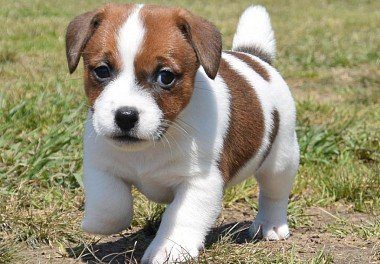
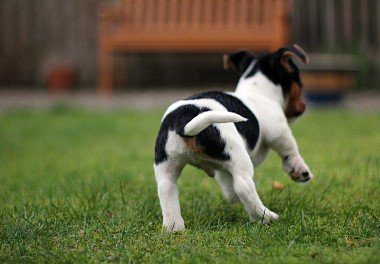
Jack Russell Terrier price
As with any purebred dog, the price of a Jack Russell Terrier directly depends on the pedigree and compliance with the breed standard. “Home” puppies, which will not be able to participate in exhibitions, but will become wonderful companions for active owners, will cost about 250$. Further, the cost grows, based on the prospects, and can reach up to 900 – 1000$.



